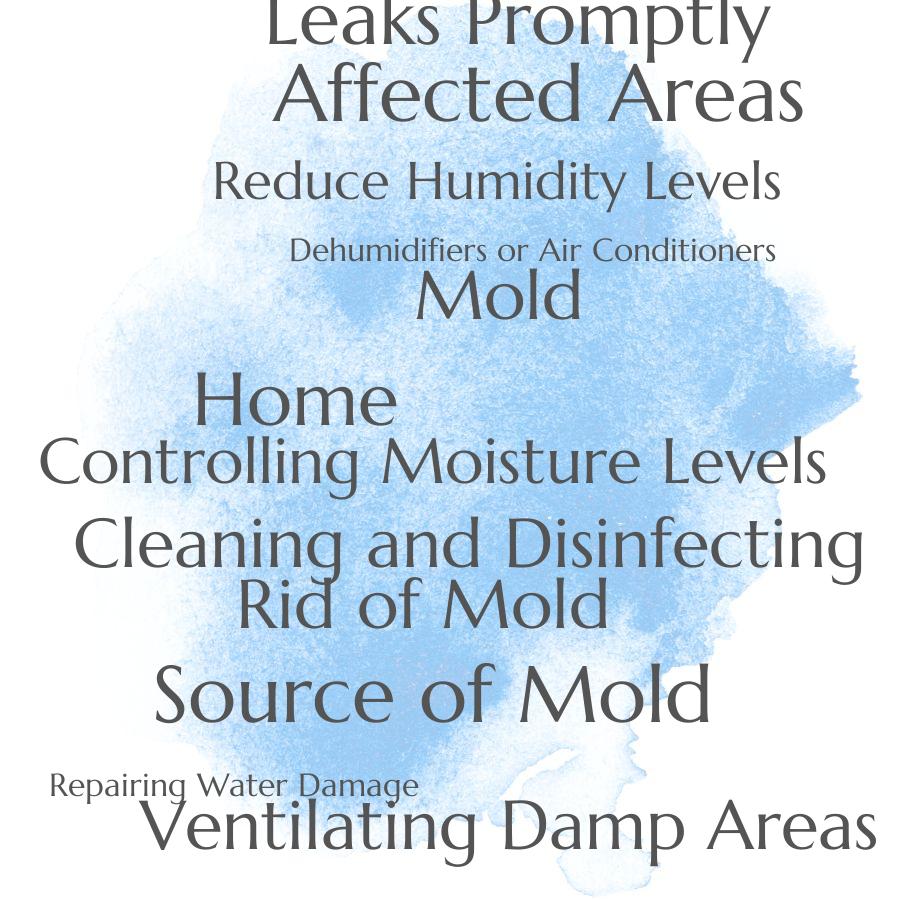To get rid of mold in your home, it is recommended to clean affected areas with a mixture of water and bleach, use a dehumidifier to reduce moisture in the air, and repair any sources of water leaks.
Mold can be a pesky problem in any home. Not only is it unsightly, but it can also cause health problems for you and your family.
If you’ve noticed mold growing in your home, don’t panic – there are steps you can take to get rid of it and prevent it from coming back. In this blog post, we’ll discuss the best ways to remove mold from your home and how to keep it from coming back.
Identifying the Source of Mold

Mold can be caused by a variety of factors, including high humidity levels, water leaks or spills, and inadequate ventilation. To identify the source of mold growth in your home, you should first inspect all areas for signs of moisture or water damage.
Look for discoloration on walls and ceilings, musty odors, and visible mold growth. You should also check around windows and doors for any gaps that could allow moisture to enter the house.
Look at any pipes or appliances that use water to make sure they are not leaking or malfunctioning. Once you have identified potential sources of moisture or water damage in your home, take steps to fix them as soon as possible to prevent further mold growth.
Cleaning and Disinfecting Affected Areas
This involves removing any visible mold growth, as well as cleaning and disinfecting the area to prevent further growth. To clean the affected area, use a detergent or soap solution and scrub with a brush or cloth.
Rinse the area thoroughly with water afterwards to remove any remaining residue. Once you have cleaned the surface, it is important to disinfect it using a bleach solution (1 part bleach to 10 parts water).
Apply this mixture liberally over the entire surface and let it sit for at least 15 minutes before rinsing off with clean water. Make sure that all surfaces are completely dry before replacing items back into place.
Controlling Moisture Levels in the Home
Mold thrives in damp, humid environments, so it’s essential to keep your home as dry as possible. This can be done by reducing humidity levels with dehumidifiers or air conditioners, using exhaust fans when showering or cooking, and fixing any leaks or water damage quickly.
Make sure that all areas of your home are well-ventilated by opening windows regularly and using fans if necessary. Clean up any spills immediately and use a dehumidifier in rooms that tend to be more humid than others such as bathrooms or basements.
By following these steps you can help prevent mold from growing in your home.
Ventilating Damp Areas
This involves increasing the air circulation and ventilation in any area that has a high level of humidity or moisture. This can be done by opening windows, using fans, or installing exhaust vents to draw out excess moisture from the air.
Doing this will help reduce the amount of moisture present and make it harder for mold to grow and spread. You should also check for any leaks or water damage that could be causing excessive moisture buildup and address those issues as well.
Using Dehumidifiers or Air Conditioners to Reduce Humidity Levels
High humidity levels create an environment that is conducive to mold growth, so by reducing the moisture in the air, you can reduce your risk of having a mold problem. Dehumidifiers work by drawing moisture out of the air and collecting it in a tank or bucket that needs to be emptied periodically.
Air conditioners also reduce humidity levels as they cool down warm air; however, they do not collect water like dehumidifiers do. Both dehumidifiers and air conditioners should be used regularly to keep humidity levels low and prevent mold from growing in your home.
Repairing Water Damage and Leaks Promptly
Water damage can occur from a variety of sources, such as plumbing issues, roof leaks, or flooding. If left unaddressed, these areas can become breeding grounds for mold spores.
To prevent this from happening, it is essential to repair any water damage and fix any leaks as soon as possible. This will help keep the area dry and reduce the chances of mold growth.
It is important to inspect your home regularly for signs of moisture or water damage so that you can address them quickly if they arise.
Inspecting for Mold Regularly
It involves looking for signs of mold growth, such as discoloration or a musty smell, on walls, ceilings, floors, furniture and other surfaces. If you notice any signs of mold growth it is important to take action immediately to prevent the spread of the spores.
This can include cleaning affected areas with a bleach solution or using a dehumidifier to reduce moisture levels in the air. Regularly inspecting your home will help you identify potential problem areas before they become serious issues and allow you to take steps to get rid of any existing mold quickly and effectively.